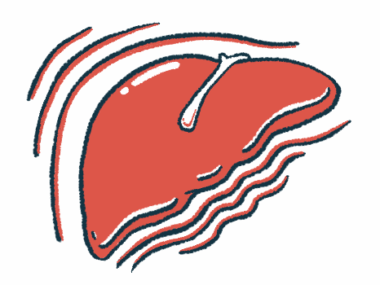NACFC 2023: Long-term Trikafta maintains effectiveness in children
Gains were presented from two open-label extension studies
Written by |

Long-term Trikafta treatment led to sustained improvements in CFTR function and reduced lung symptoms in children, ages 6-11, with cystic fibrosis (CF), according to almost three years of interim data from an open-label extension (OLE) study.
There were no signs of lung function decline during the 3.5-year treatment period that so far includes the 24-week parent Phase 3 clinical trial plus the OLE.
Similar gains were seen in children, ages 2-5, after 48 weeks of treatment in another open-label extension study.
The therapy’s developer Vertex Pharmaceuticals presented the findings this week as posters at the 2023 North American Cystic Fibrosis Conference (NACFC) in Phoenix.
“Trikafta has fundamentally changed the course of CF treatment, and the data presented at this year’s NACFC is further evidence of the long-term benefits it brings to children with this disease,” Carmen Bozic, MD, Vertex’s executive vice president and chief medical officer, said in a company press release.
Results of OLE in children, ages 6-11
CF is caused by mutations in the CFTR gene that lead to a faulty or missing CFTR protein and a buildup of abnormally thick and sticky mucus in organs. The most common CF-causing genetic defect is the F508del mutation, found in about 90% of all CF patients.
CFTR modulators are approved to enhance the function of CFTR. Trikafta is a triple combination CFTR modulator that’s considered highly effective at improving lung function in patients.
A previous Phase 3 study (NCT03691779) tested Trikafta for 24 weeks (six months) in 66 children, ages 6-11, who had two F508del mutations or one F508del and one minimal function mutation. The treatment significantly improved lung function and lowered chloride sweat levels, an assessment of CFTR function.
A total of 64 trial participants were enrolled and dosed in its 192-week (3.7 years) OLE, which consisted of two parts, A and B. Twenty children discontinued the study due to commercial drug availability or they completed part A, but didn’t participate in part B.
After 144 weeks (almost 2.8 years) in the OLE, treatment with Trikafta maintained the clinically meaningful improvements from the parent Phase 3 study, including lung function, sweat chloride concentration, body mass index (body fat content), and quality of life. Lung function remained stable over 3.5 years across both parent and OLE studies.
All the children had adverse events (AEs), most of which were mild (35.9%) or moderate (60.9%) in severity. In the OLE, the adjusted rate of AEs and serious AEs was lower than in the parent study. Two children (3.1%) discontinued the OLE due to AEs — one had a nonserious increase in liver enzymes, a sign of liver injury, deemed possibly related to Trikafta, and the other had a nonserious case of aggression unrelated to Trikafta.
Trikafta in children with CF, ages 2-5
The second poster reported on interim OLE data from a second 24-week, Phase 3 clinical trial (NCT04537793) evaluating Trikafta in CF children, ages 2-5, who carried at least one F508del mutation. Like the results in the older age groups, Trikafta improved lung function and reduced sweat chloride.
Among the 70 children enrolled and dosed in this study’s 192-week OLE, Trikafta sustained the lung function and sweat chloride benefits from the parent trial for 48 weeks (six months) in the OLE. Growth assessment, which was within the normal range at the beginning of the parent study (baseline), has remained stable throughout the OLE so far.
Trikafta was also associated with increases in fecal levels of the pancreatic elastase-1 enzyme (FE-1), which reflected improved pancreatic function. FE-1 levels after 48 weeks in the OLE were higher (mean increase, 89.8 mcg/g) than after 24 weeks in the parent study (mean increase, 39.5 mcg/g).
At the beginning of the parent study, two out of 75 children (2.7%) had FE-1 values of 200 mcg/g or higher, which increased to six out of 75 (8%) after 24 weeks, then to 13 of the 70 (18.6%) children in the OLE.
Nearly all the children (98.6%) in the OLE had AEs, most of which were mild (45.7%) or moderate (45.7%) in severity. Adjusted AE rates in the OLE were also lower than in the parent study. Two children had nonserious AEs. One had elevated liver enzymes and another had behavioral changes. Both might have been related to Trikafta and resolved when the drug was discontinued.
“We remain committed to developing medicines that can be given to people with CF as young as possible, because we now know treating the disease early in life can slow disease progression,” Bozic said.







